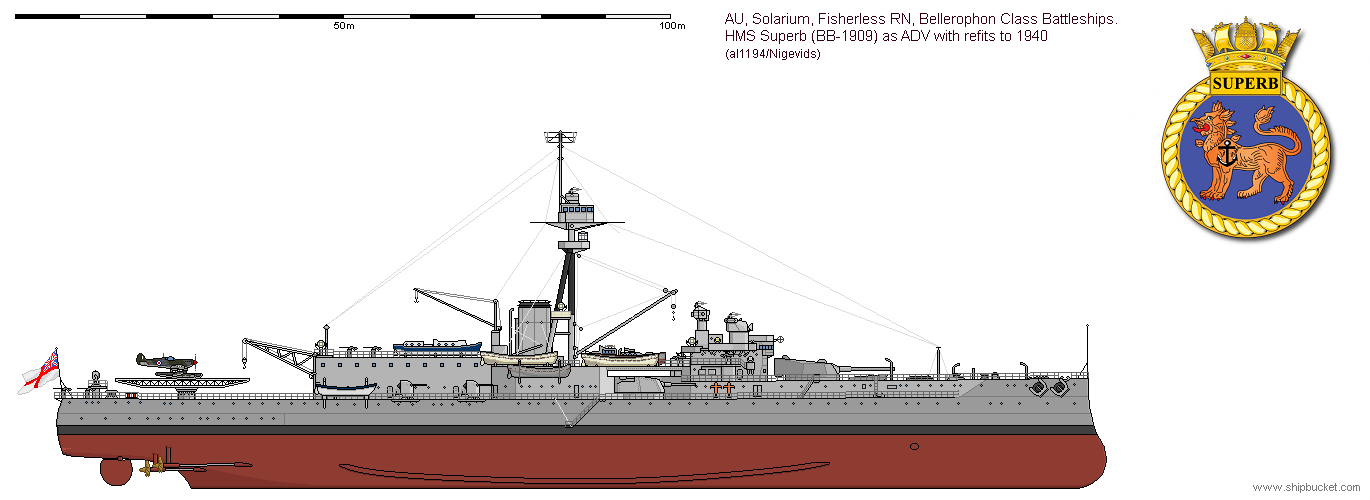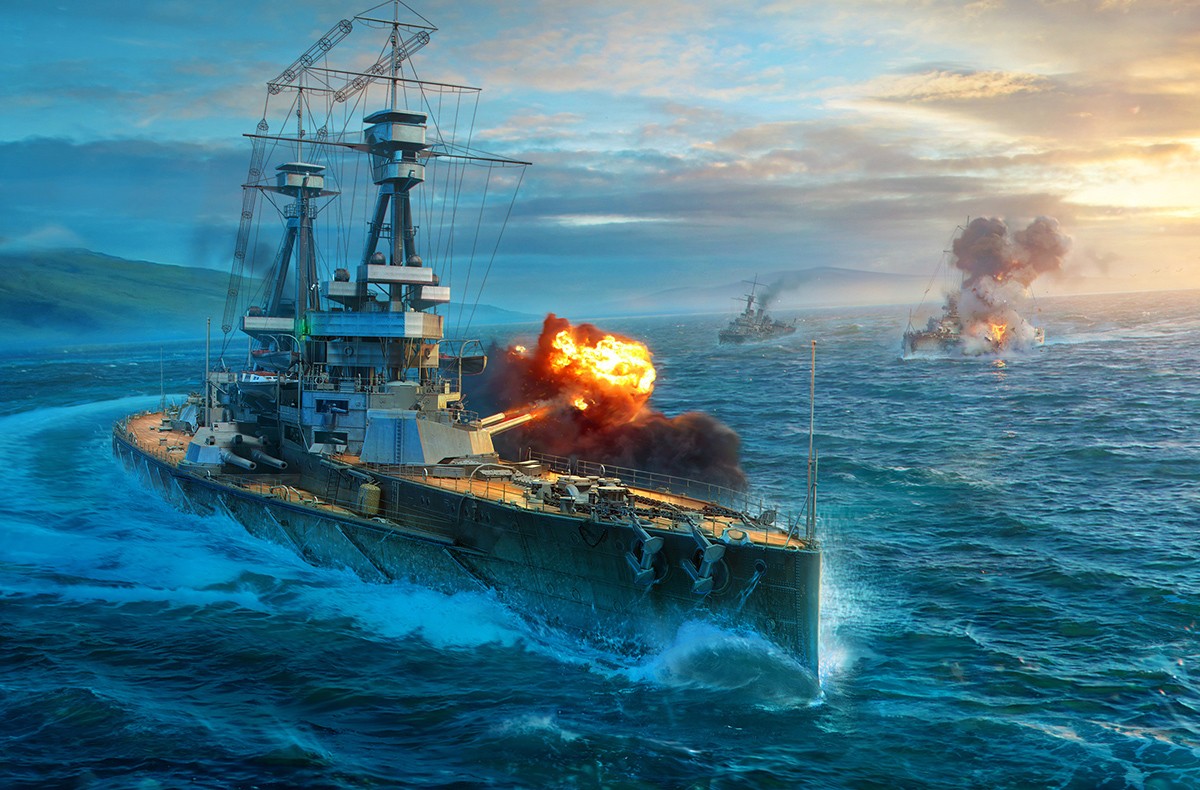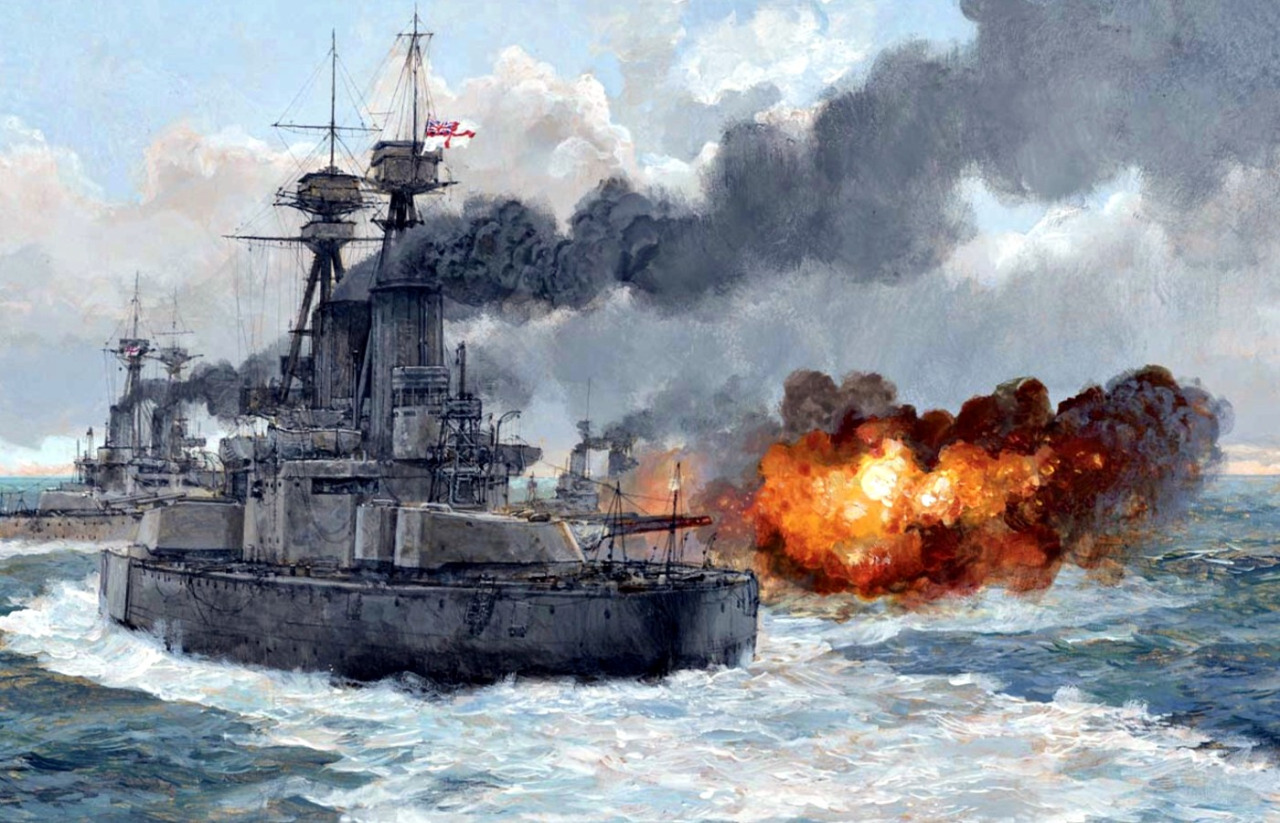The Royal Navy needed to get an advantage of numbers in the new 'Dreadnought' type battleships. Three more copies of the Dreadnought, with only minor differences, were laid down in 1906 and commissioned in 1909. By May 1909 the British had finished four 'Dreadnoughts' with another three (St Vincents) completing in 1910, the first two German ships (Westfallen) did not complete till October 1909 with another two in 1910. UK-7 to Germ-4. The numerical advantage never got any closer.

The Bellerophon class had a quiet war, remaining in the Grand Fleet throughout. They were all at Jutland and fired at whatever targets presented themselves. The Superb had the honour to lead the combined fleet through the Dardanelles into the Black Sea in 1919. That fleet supported the White Russian Revolution in the Black Sea with Marine units off the ships assisting ashore. The Washington Treaty made these ships excess to requirements. All of these ships were only 10 years old, and though obsolete, they were a lot less obsolete than a lot of the cruisers being used as training ships. The cruisers and others were deleted, discarded, sold and/or scrapped.
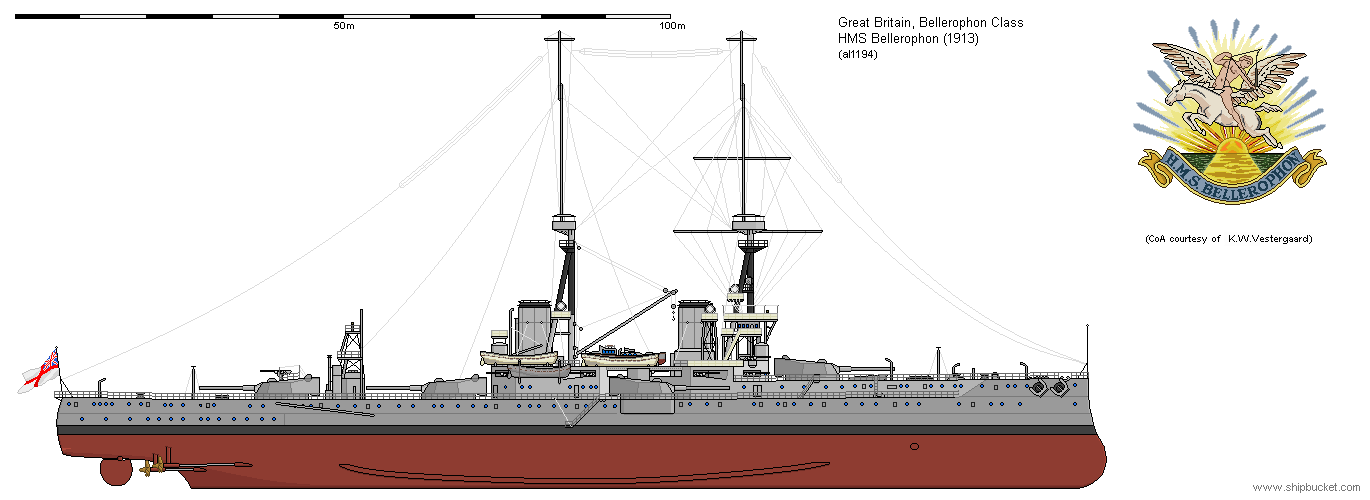
To comply with the Washington Treaty and to take these ships out of the battleship category required them to be demilitarised to a certain extent. Q, R, and X turrets being removed, the forward boiler is also removed and the remaining boilers are converted to oil firing. To make them useful as training ships, a range of weapons from battleships (12", 2x2), cruisers, destroyers and smaller were to be fitted. An accomodation block was fitted in the space vacated by X turret. The removal of Q and R turrets provided space for the fitting of cruiser sized weapons of various sizes on the different ships of the class. Bellerophon got a twin 6" fitting, Temeraire got a twin 7.5" (not carried forward), and Superb got the latest triple 6" experimental mounting. The class plied their trade as training ships for ten years. As seagoing training ships they operated all over the world. Postings to Singapore, Hong Kong, Malta, and other Commonwealth nations used all the Dreadnought clones to their fullest.

The three Bellerophon Class followed the Dreadnought through the conversion from Training Ship to Area Defence Vessel. The removal of the fore funnel and the forward boiler room had provided a lot of necessary space for such things as a rebuilt bridge superstructure able to carry some of the later optical equipment, below decks added space for both extra accommodation and offices as well as extra space for more fuel oil bunkers which enhanced the ships range. The forward tripod was removed entirely while the aft tripod was updated to carry better search and surveillance equipment.
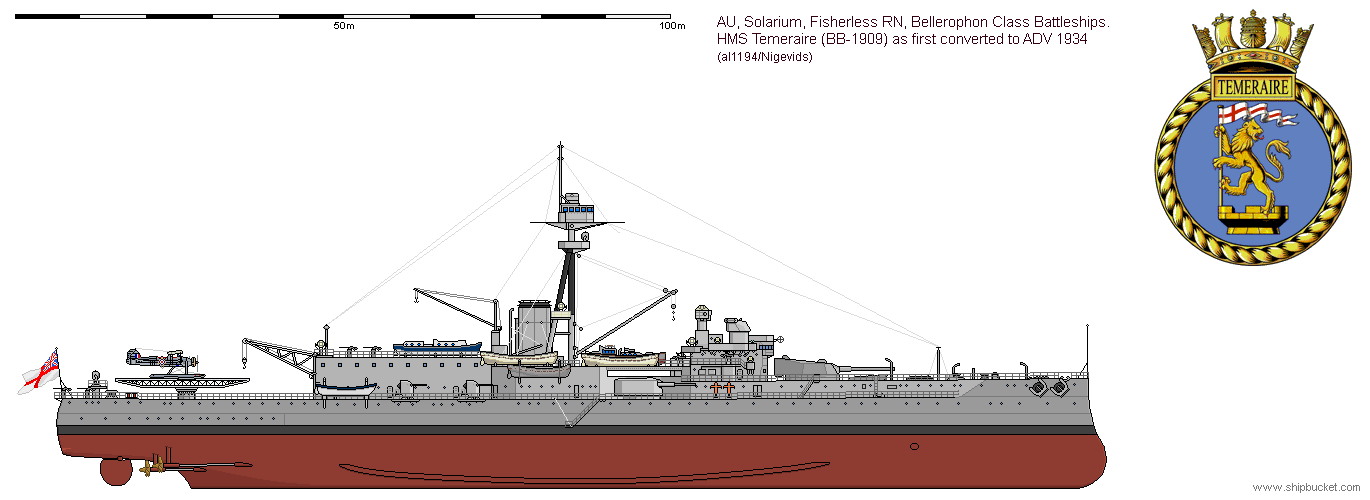
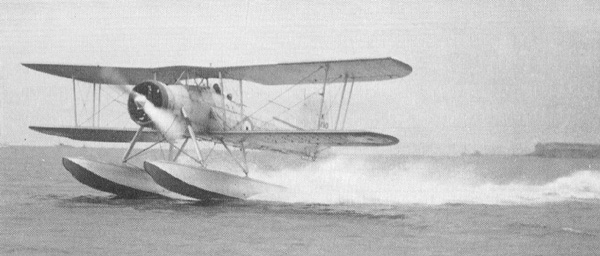
The ADV design was a very good way to make use of what were essentially mobile targets in time of war. Being used as repair and depot ships to the squadron craft that could populate the smaller harbours with few resources of their own was a godsend to the RN and its ever hungry needs.
